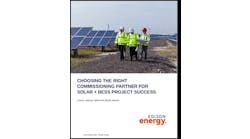Energy Efficiency is still cheaper
Energy efficiency is still cheaper than building a new power plant. That’s the word from the American Council for an Energy Efficient Economy, which plans to release a report on the economics of 14 energy efficiency program administrators with particularly high energy savings.
The forthcoming report finds the average cost of the programs to be about 3.5 cents per kWh saved, says ACEEE in a recently published fact sheet. “How Much Does Energy Efficiency Cost?”
This is signficantly lower than the 7.5 cents/kWh that the Environmental Protection Agency calculated in Clean Power Plan documentation for the first year of the federal program.
Why the difference?
To be fair, the EPA did call its figure conservative — overly so, says ACEEE.
“To us, it appears that the agency wanted a relatively high cost in order to show that even if costs are high, energy efficiency is cost effective,” said ACEEE. “Most likely, energy efficiency will cost program administrators under 4 cents per kWh saved, much less than a new power plant. EPA’s very conservative numbers are higher, but still show an energy efficiency cost that is likely to be less than most new power plants.”
***
Lighting the way with LaaS
More and more energy products are being offered ‘as-a-service’, where customers pay a subscription fee for an outside party to operate the system. And lighting is no exception. In a new report, Navigant Research forecasts that global revenue from lighting as a service (LaaS) will grow from $35.2 million in 2016 to $1.6 billion in 2025.
“Navigant Research defines LaaS as the third-party management of a lighting system that may include additional technical, maintenance, financial, or other services,” says Benjamin Freas, principal research analyst with Navigant Research. “These offerings can begin with the installation of a lighting system, continue through maintenance and management, and include the recycling or disposal of equipment at the end of its life.”
Building owners seek out LaaS to overcome one of the main barriers to installing new sophisticated lighting and lighting controls — lack of experience in operating them.
Several companies are beginning to offer various forms of LaaS, as they experiment with how best to meet customer needs, according to the report. Navigant Research anticipates that these efforts represent the start of a trend that is expected to mature and grow rapidly during the next 10 years.
An executive summary of the report is available for free download on the Navigant Research website.
***
New York’s energy efficiency bragging rights
New York is reporting some big numbers from its energy efficiency efforts. The state has undertaken 112,000 energy efficiency projects since 2012, which is expected to save customers $341 million annually and spur $800 million in private investment.
Both residential and commercial customers participated in the energy efficiency programs — 90,000 individual homes and 22,000 commercial buildings, including apartment buildings, hospitals, schools, art galleries and office buildings.
Homeowners are saving an average of $56 per month on electric and natural gas bills, and building owners are saving an average of $1,023 per month, according to a news release issued by Governor Andrew Cuomo’s office.
In all, the projects will reduce annual electricity demand by 2 million MWh/year, the equivalent of saving enough electricity to power more than 275,000 average-size homes. They will also reduce annual heating fuel demand by 9 trillion Btu, the equivalent of heating more than 85,000 average-size homes, according to the state.
In his State of the State address, Cuomo vowed to increase energy efficiency of 500,000 households and 20,000 businesses by 2020. To meet this goal, the state will invest part of its Clean Energy Fund to help property owners and renters audit their current energy use to identify energy savings opportunities and replace inefficient systems and appliances with high-efficiency models wherever possible.
Learn more about New York’s clean energy efforts at the Microgrid Knowledge 2016 conference, which will be May 19 in Manhattan.





